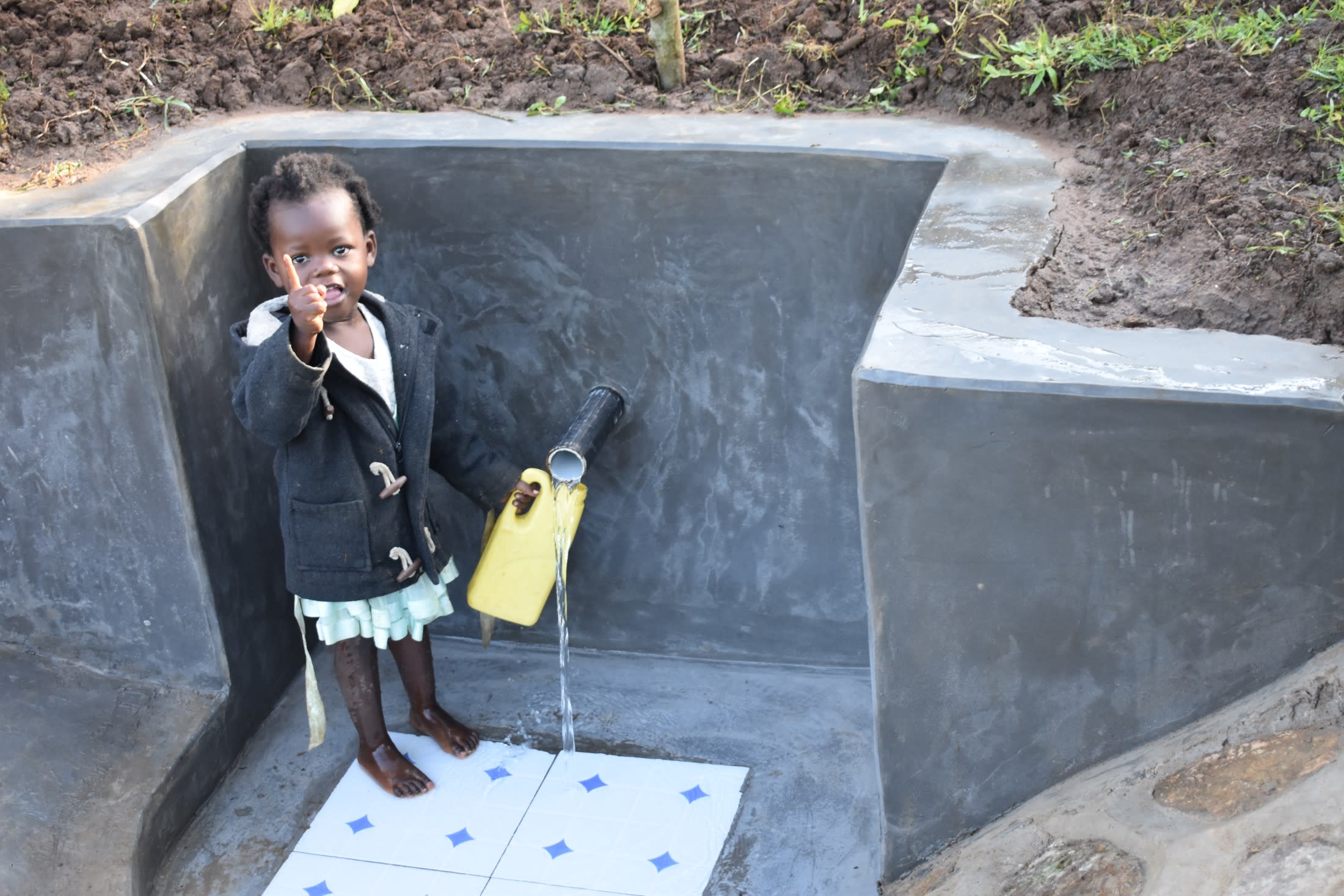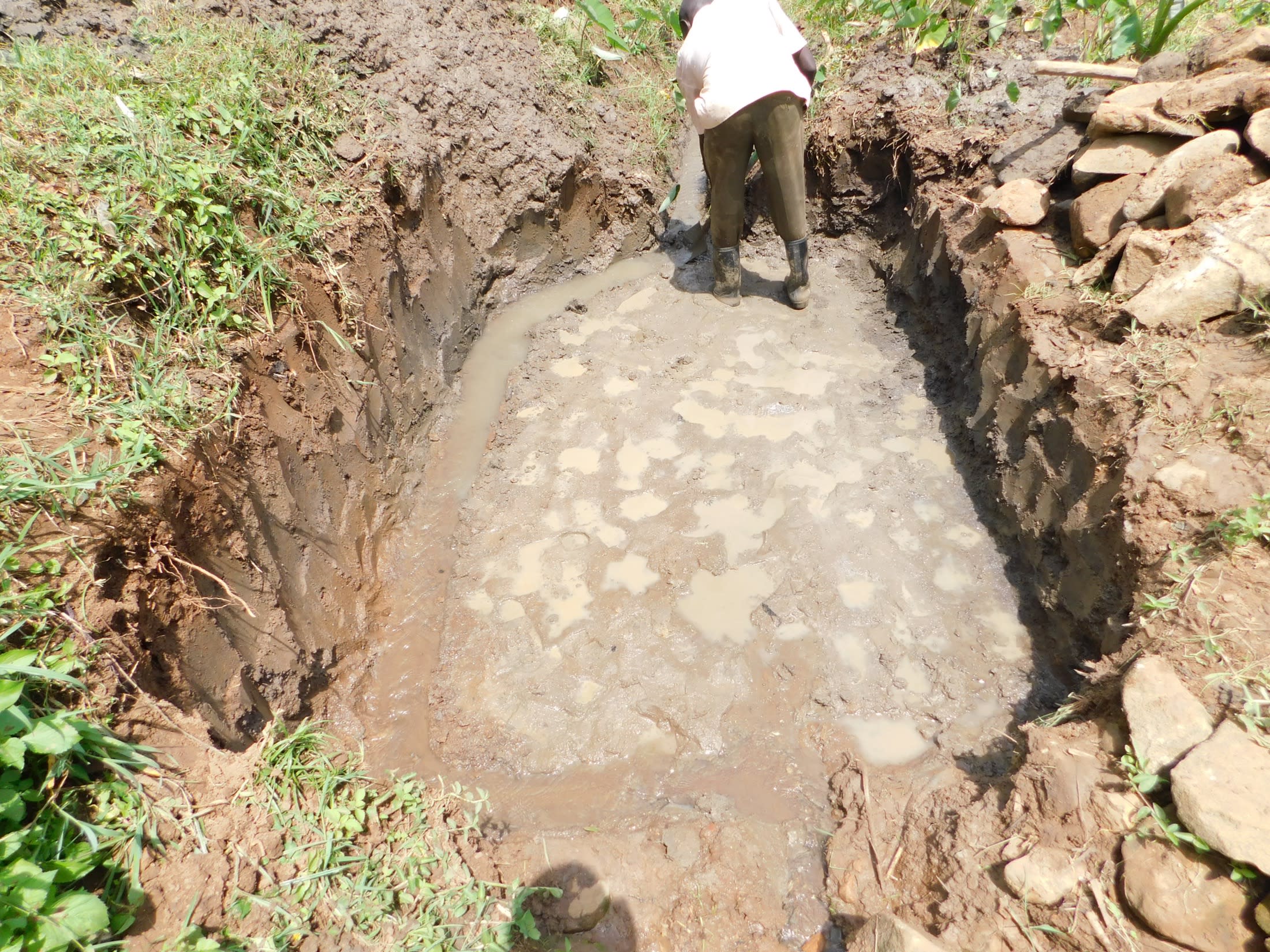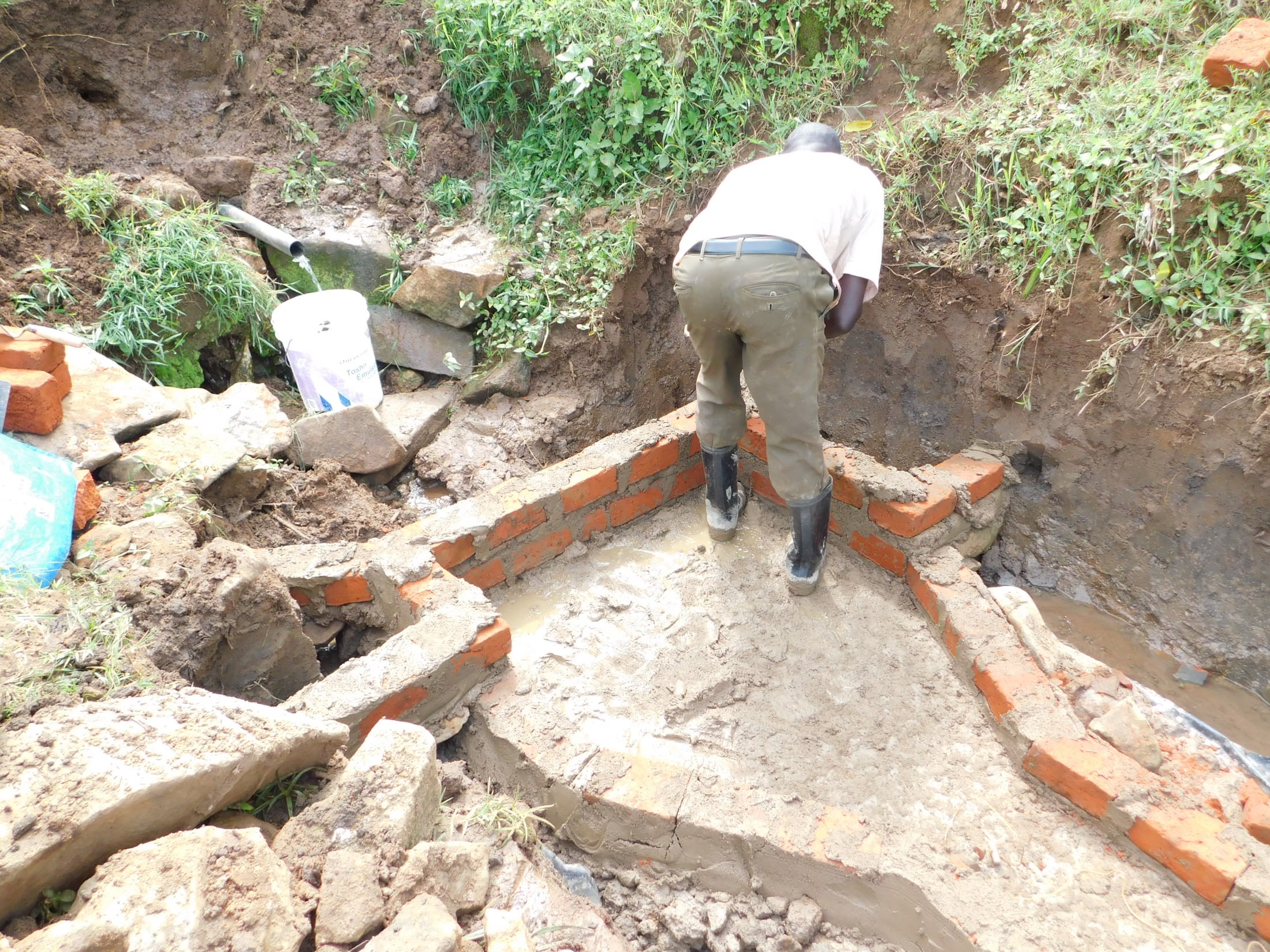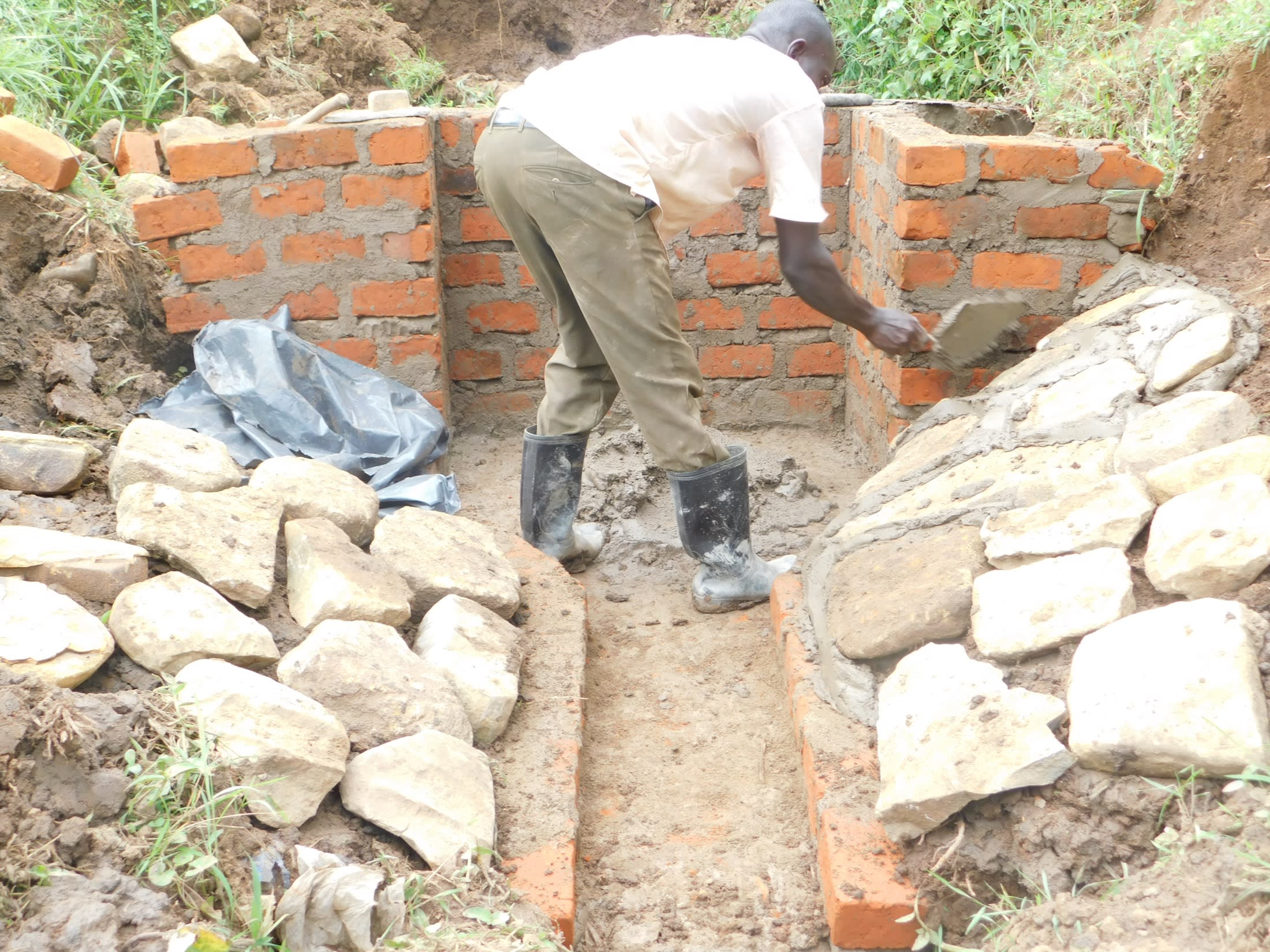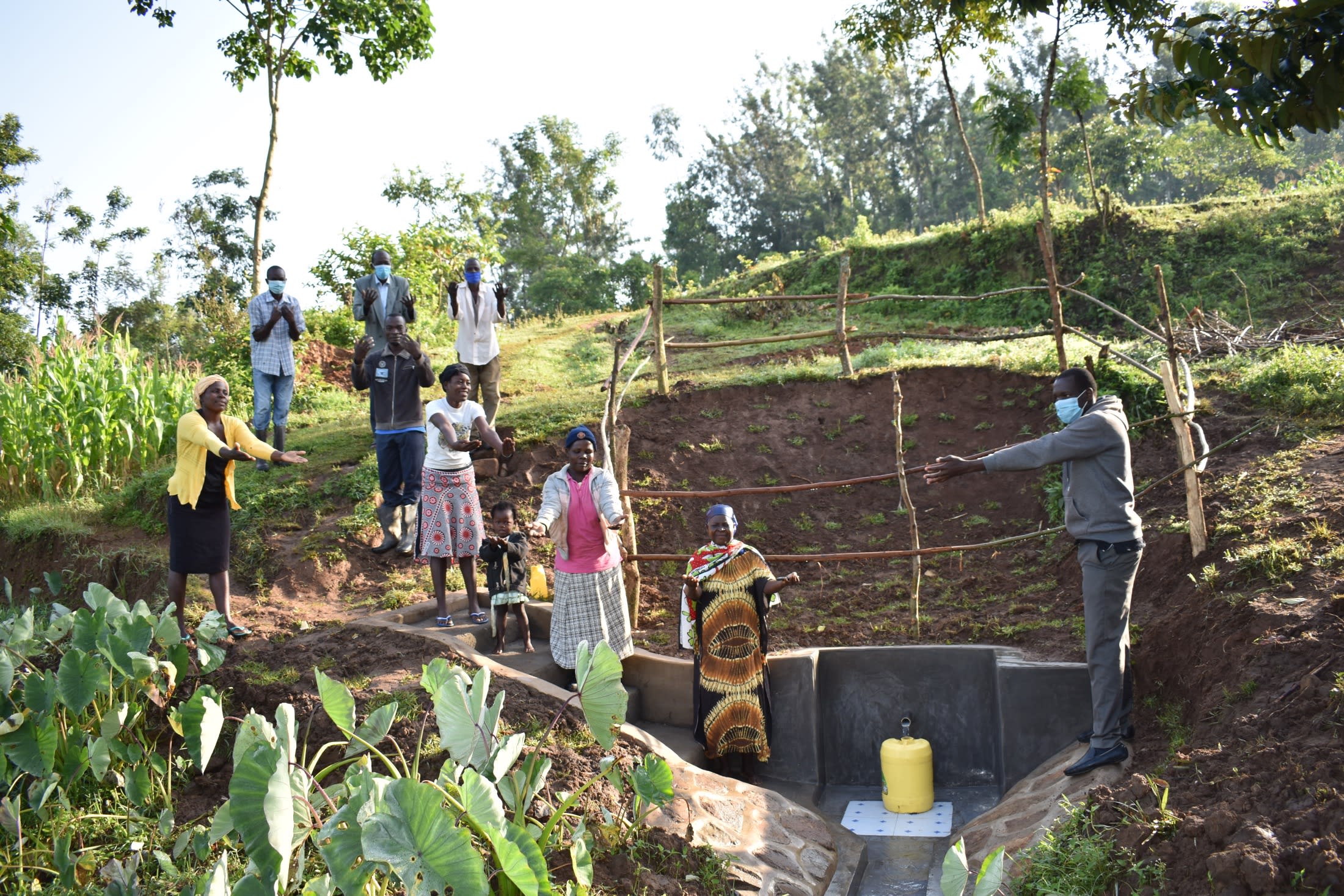Mushirongo Community is covered in green vegetation; most people here are farmers who plant maize, sugarcane, and beans on a small scale. A few people do casual labor jobs such as construction or working on others' farms. The roads in this area are rough, becoming very muddy during the rainy season. Most houses are semi-permanent with iron sheet roofs and mud walls.
280 people in Mushirongo depend on Were Spring for water. In its unprotected state, the spring has several issues. The community members tried to protect the spring on their own, but they were unsuccessful without the proper materials or technical expertise.
The spring's eyes, where its water originates, are still open to contamination from surface runoff that carries farm chemicals, dirt, and residues from animal waste. Some people also do their laundry around the spring, where the soapy and dirty water flows into the spring water. As a result, the spring water is not clean or safe, putting community members' health at risk. When they get sick, community members cannot afford medicines from the hospital, so most depend on traditional medicines to get better. Unfortunately, not everyone is lucky enough to recover.
Community members improvised a discharge pipe by lodging a plastic pipe between rocks and the earth near where the spring's water comes to the surface. The pipe, however, is not capturing all of the spring's natural output. This slows community members down as they watch the uncaptured spring water escape down the rocks and ground around the pipe. All of the time people waste at the spring due to its currently limited yield means delayed daily schedules and reduced productivity in other aspects of their lives.
"When you get people (adults) at the spring, they cannot allow you as a child to fetch water before them. Sometimes my mum thinks that I was playing at the water source, and therefore she punishes me for delaying bringing her water," said young boy Flevian.
The crowding and wait times at the spring are at their worst in the evening, on weekends, and during the dry season. Sometimes conflicts break out among community members, frustrated at the delays in this necessary and basic task. When other seasonal springs in the area dry up, local spring users must also contend with neighboring villages coming to Were Spring for its reliable water, which sometimes makes the wait times unbearable.
"I wanted to plant vegetables and use the spring water for irrigation, but by the time that I was supposed to irrigate the vegetables, the water source was so crowded, my vegetables dried up, and I was not able to continue with the project," said Sara Mikalo, a young farmer and mother.
What We Can Do:
Spring Protection
Protecting the spring will help provide access to cleaner and safer water and reduce the time people have to spend to fetch it. Construction will keep surface runoff and other contaminants out of the water. With the community’s high involvement in the process, there should be a good sense of responsibility and ownership for the new clean water source.
Fetching water is a task predominantly carried out by women and young girls. Therefore, protecting the spring and offering training and support will help empower the female members of the community by freeing up more of their time and energy to engage and invest in income-generating activities and their education.
Training on Health, Hygiene, COVID-19, and More
To hold training during the pandemic, we work closely with both community leaders and the local government to approve small groups to attend training. We ask community leaders to invite a select yet representative group of people to attend the training, which will then act as ambassadors to the rest of the community to share what they learn. We also communicate our expectations of physical distancing and wearing masks for all who choose to attend.
The training will focus on improved hygiene, health, and sanitation habits in this community. We will also have a dedicated session on COVID-19 symptoms, transmission routes, and prevention best practices.
With the community’s input, we will identify key leverage points to alter their practices at the personal, household, and community levels to affect change. This training will ensure participants have the knowledge they need about healthy practices and their importance to make the most of their water point as soon as the water is flowing.
Our team of facilitators will use a variety of methods to train community members. Some of these methods include participatory hygiene and sanitation transformation, asset-based community development, group discussions, handouts, and demonstrations at the spring.
One of the most important issues we plan to cover is handling, storing, and treating water. Having a clean water source will be extremely helpful, but it is useless if water gets contaminated by the time it is consumed. The community and we strongly believe that all of these components will work together to improve living standards here, which will help to unlock the potential for these community members to live better, healthier lives.
We will then conduct a small series of follow-up training before transitioning to our regularly scheduled support visits throughout the year.
Training will result in the formation of a water user committee elected by their peers that will oversee the spring's operations and maintenance. The committee will enforce proper behavior around the spring and delegate tasks that will help preserve the site, such as building a fence and digging proper drainage channels. The fence will keep out destructive animals and unwanted waste, and the drainage will keep the area’s mosquito population at a minimum.

 Protected Spring
Protected Spring
 Rehabilitation Project
Rehabilitation Project











